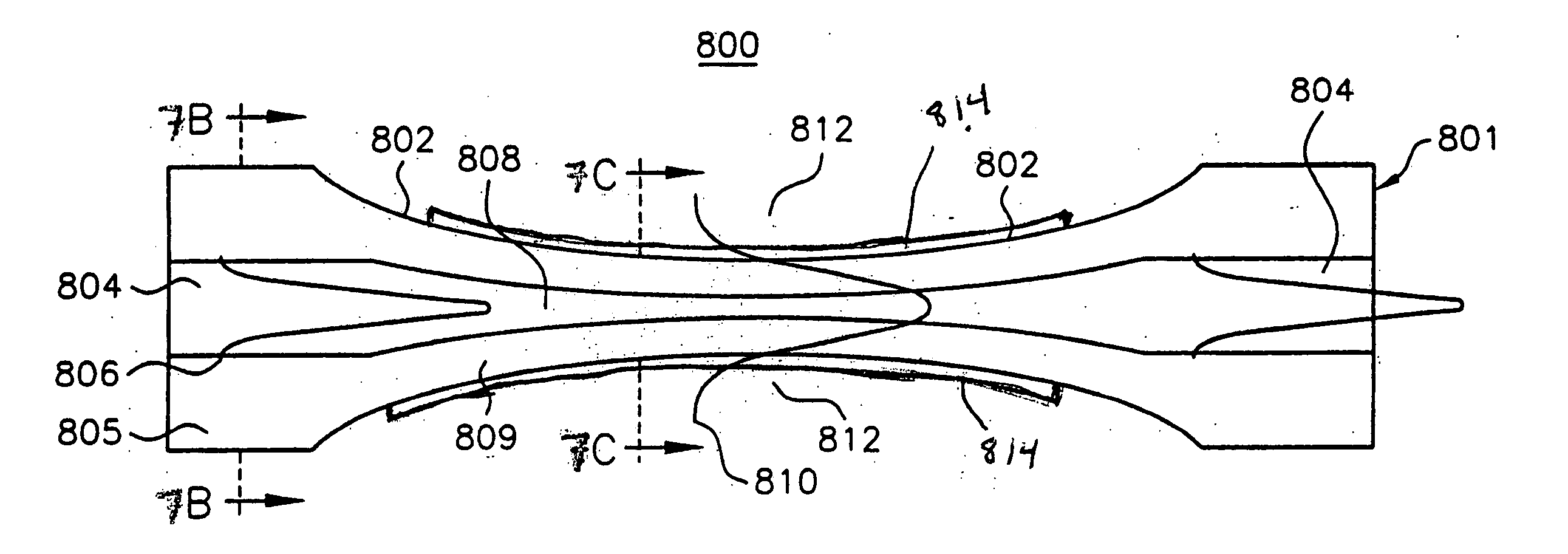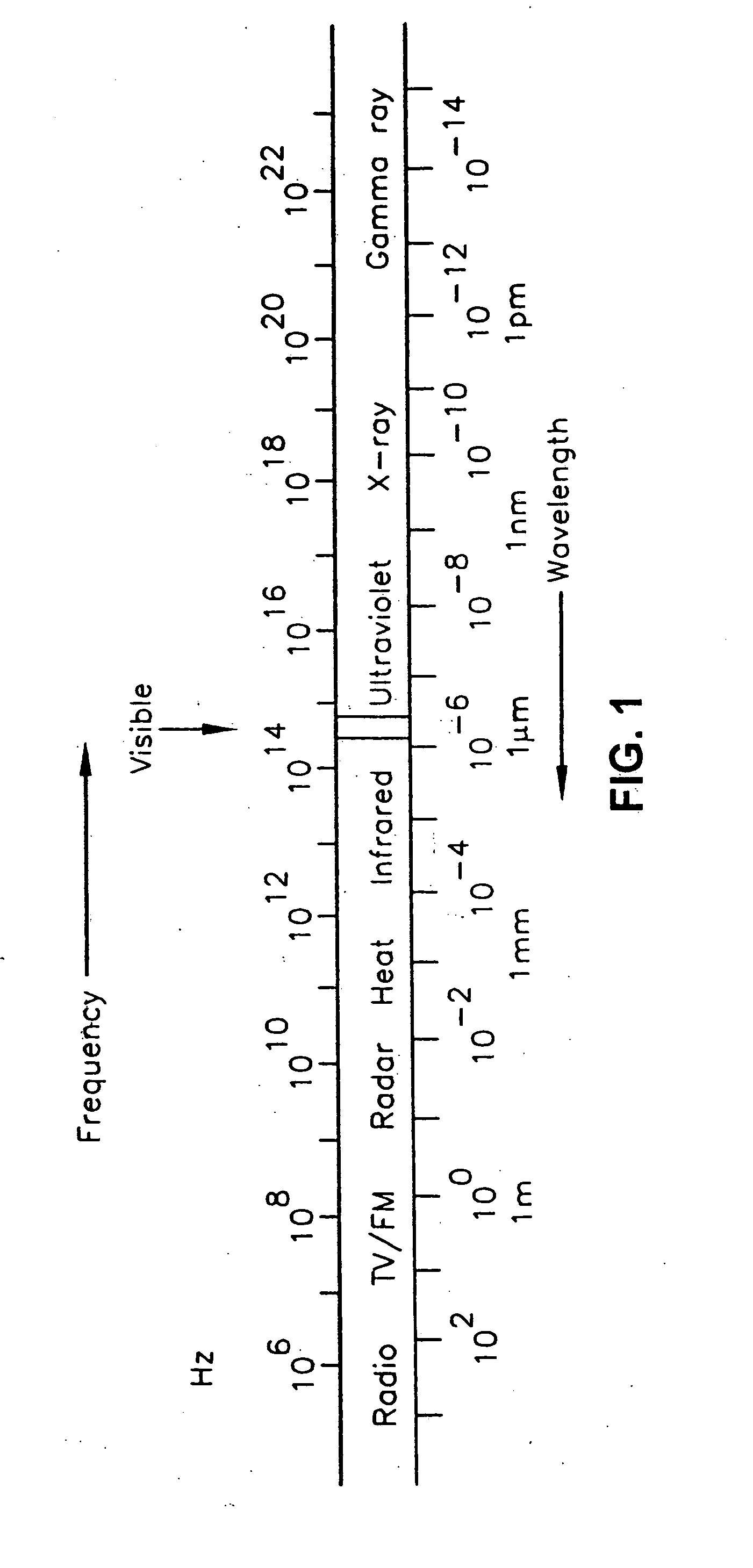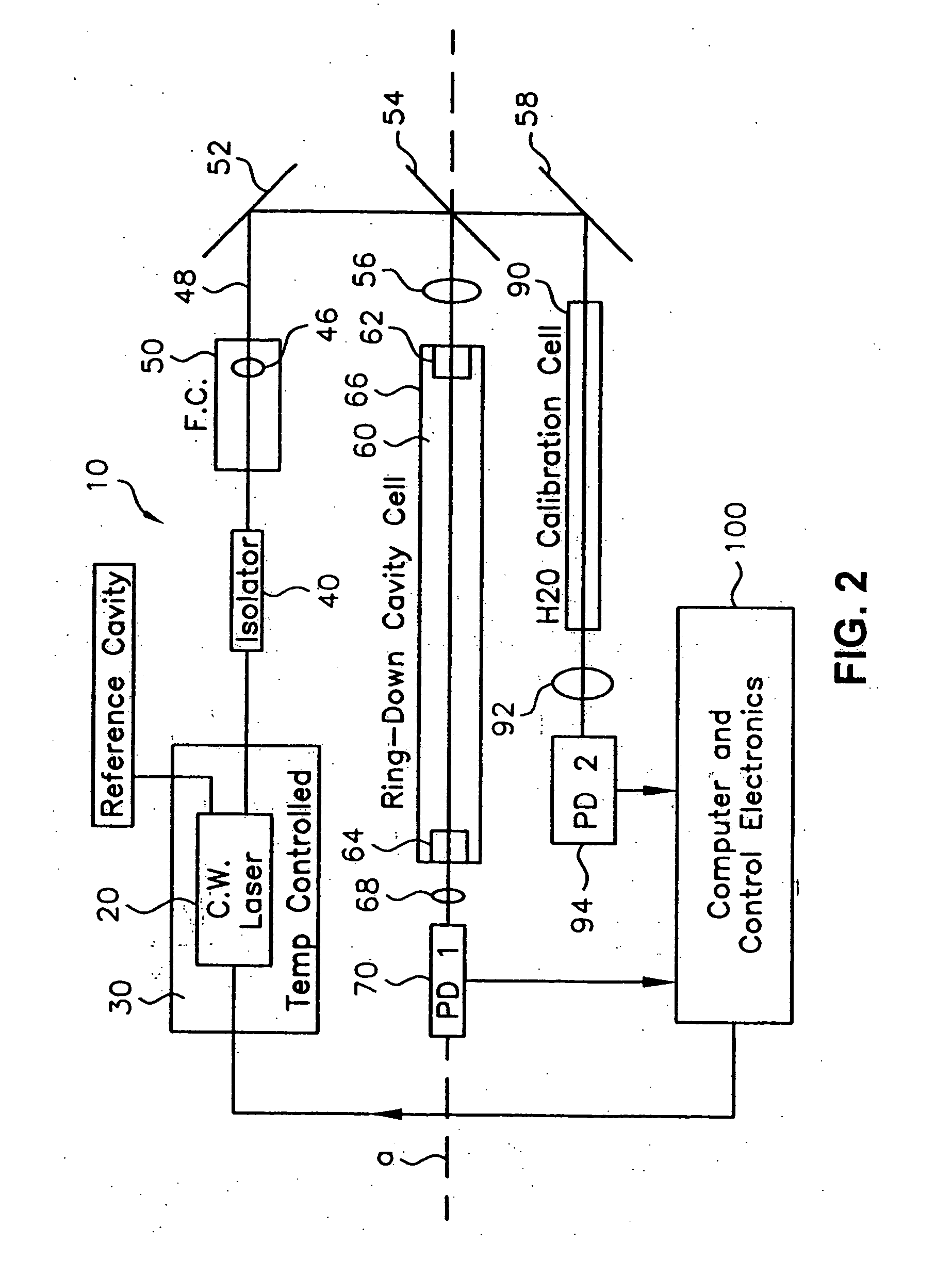Cavity ring-down detection of surface plasmon resonance in an optical fiber resonator
a surface plasmon resonance and cavity detection technology, applied in the direction of optical radiation measurement, photometry using electric radiation detectors, instruments, etc., can solve the problems of difficult use, impractical industrial applications, limited spectroscopic region of crds,
- Summary
- Abstract
- Description
- Claims
- Application Information
AI Technical Summary
Benefits of technology
Problems solved by technology
Method used
Image
Examples
Embodiment Construction
[0044] The entire disclosure of U.S. patent application Ser. Nos. 10 / 644,137 filed on Aug. 20, 2003; Ser. No. 10 / 157,400 filed on May 29, 2002; and Ser. No. 10 / 017,367 filed Dec. 12, 2001 are expressly incorporated herein by reference.
[0045] As described above, CRDS provides a highly sensitive means of measuring analytes in a medium within an optical cavity. Further, Applicants have described in 10 / 157,400 filed on May 29, 2002 and 10 / 017,367 filed Dec. 12, 2001 methods of using the evanescent fields surrounding optical fibers to provide loss in exemplary optical fiber-based ring-down cavities. The present invention extends these methods through the use of surface plasmon resonance (SPR) techniques to improve sensor sensitivity and to expand the types of environmental changes that may be sensed with exemplary sensors according to the present invention.
[0046] SPR spectroscopy is used to measure small changes in refractive index on an external surface of a total internal reflection ...
PUM
 Login to View More
Login to View More Abstract
Description
Claims
Application Information
 Login to View More
Login to View More - R&D
- Intellectual Property
- Life Sciences
- Materials
- Tech Scout
- Unparalleled Data Quality
- Higher Quality Content
- 60% Fewer Hallucinations
Browse by: Latest US Patents, China's latest patents, Technical Efficacy Thesaurus, Application Domain, Technology Topic, Popular Technical Reports.
© 2025 PatSnap. All rights reserved.Legal|Privacy policy|Modern Slavery Act Transparency Statement|Sitemap|About US| Contact US: help@patsnap.com



